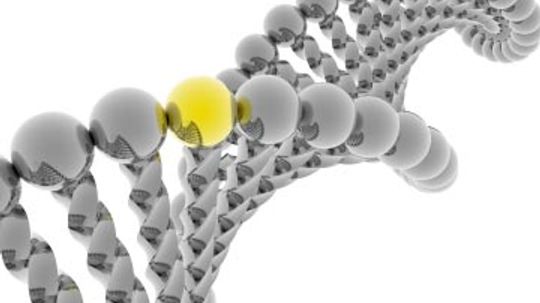Unlocking the secrets behind genetic expression has long been a subject of fascination and intrigue. Understanding how genes are turned off and on is crucial in comprehending the complex workings of our biological systems. This article delves into the intricate mechanism that governs gene regulation, shedding light on this fundamental process.
An Insight into Gene Regulation
Gene regulation plays a pivotal role in determining which genes are active or inactive within an organism’s cells at any given time. It involves a series of intricate molecular events that control gene expression, allowing cells to respond to various internal and external stimuli effectively.
This regulatory mechanism relies on specialized proteins known as transcription factors, which bind to specific regions along DNA strands called enhancers or promoters. By binding to these sites, transcription factors either enhance or inhibit the initiation of gene transcription – the first step towards protein synthesis.
In addition to transcription factors, another key player in gene regulation is epigenetic modifications. These modifications act as chemical tags attached to DNA molecules or associated proteins, altering their structure and accessibility for transcriptional machinery. They can switch genes on or off by modifying chromatin structure without changing the underlying DNA sequence itself.
The Role of Environmental Factors
Beyond intrinsic cellular mechanisms, environmental cues also influence gene regulation. External signals such as temperature changes, nutrient availability, stressors, and even social interactions can impact genetic expression patterns across different organisms.
For instance, studies have shown that certain plants exhibit altered gene expression when exposed to varying levels of sunlight throughout their growth stages. Similarly, human studies have revealed how lifestyle choices like diet and exercise can modulate gene activity related to metabolism and disease susceptibility.
This interplay between genetics and environment highlights the dynamic nature of gene regulation, emphasizing the importance of considering both factors in understanding complex biological processes.
Implications and Future Directions
The study of gene regulation holds immense promise for various fields, including medicine, agriculture, and environmental science. By unraveling the mechanisms that control genetic expression, scientists can gain insights into disease development and potentially identify novel therapeutic targets.
Furthermore, advancements in technologies such as CRISPR-Cas9 have revolutionized our ability to manipulate gene expression directly. This opens up possibilities for targeted interventions to correct genetic abnormalities or enhance desired traits in organisms.
In conclusion, the intricate process of gene regulation governs how genes are turned off and on within an organism’s cells. Through transcription factors and epigenetic modifications, this mechanism ensures precise control over genetic expression patterns. Understanding these regulatory processes not only deepens our knowledge of fundamental biology but also paves the way for groundbreaking discoveries with far-reaching implications.




